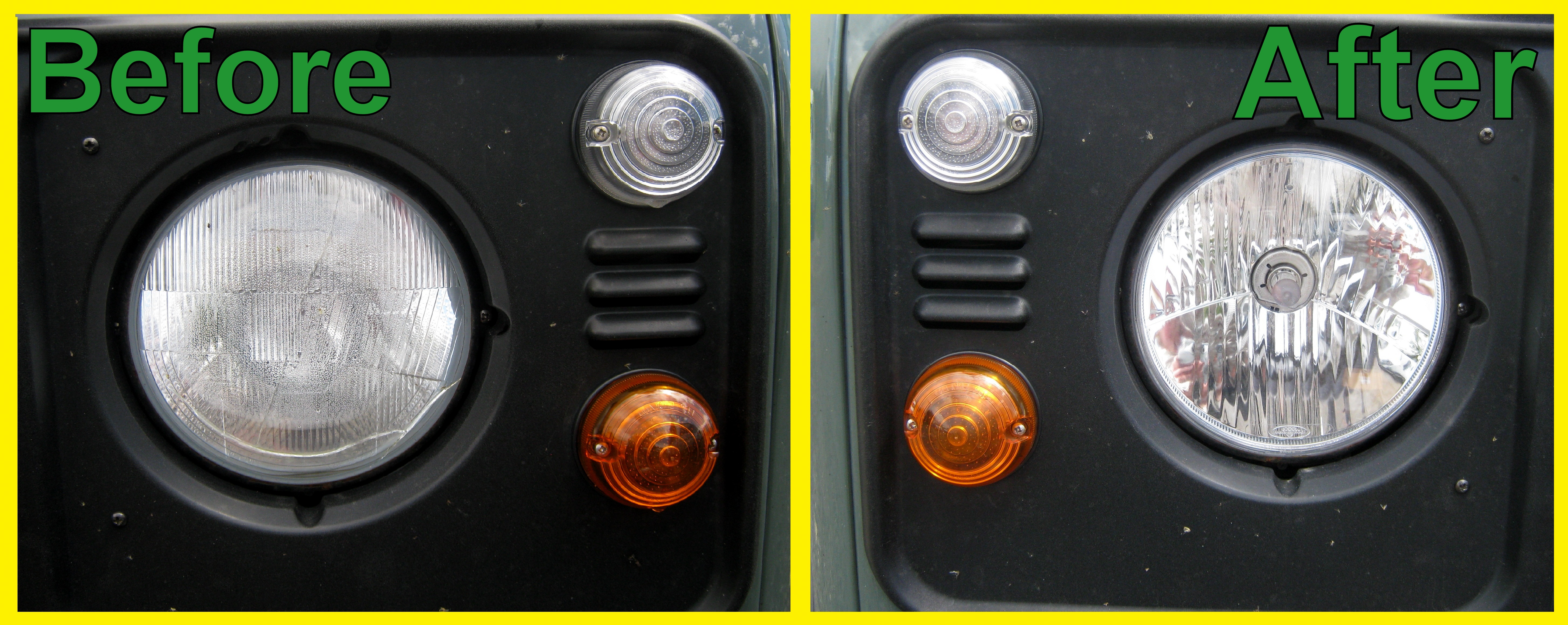Distracting glare comes from light reflected off the front of lenses so that others can’t see your eyes, and from light reflected off the backs of or within the lenses so that you see reflections in your lenses. Being subtler this glare is more difficult to detect.
Why Do I See Glare, In this regard, is seeing glare normal? Starbursts around light are especially visible at night, and may be caused by eye conditions such as cataract or corneal swelling, or may be a complication of eye surgery.

This is a very common problem and is usually due to either worn out frames, a poor lens/frame match in which the lens is to heavy for the frame, or poor frame match for your facial anatomy. How does a sniper scope work? Being subtler this glare is more difficult to detect. When you hold your glasses, tilt them this way and that and look for glare.
Nearsightedness (difficulty seeing things far away)
Click to see full answer. Why is it harder to see at night as we age? Why do i see glare in my glasses? The aging cornea and lens in the eye become less clear as we age, causing light to scatter inside the eye, which increases glare. Discomforting glare occurs in varying degrees of intensity, but even the milder degrees of discomforting glare result in visual discomfort, often shown by symptoms of eyestrain or fatigue. Here’s a look at why you might be seeing halos and what to do about them.
 Source: youtube.com
Source: youtube.com
Being subtler this glare is more difficult to detect. Starbursts, or a series of concentric rays or fine filaments radiating from bright lights, may be caused by refractive defects in the eye. Seeing halos is one of the most common symptoms of cataracts, especially in posterior subcapsular cataracts. They generally tend to get better but do not completely go away..
 Source: youtube.com
Source: youtube.com
If those were not much of an issue beforehand (despite the improvement in visual acuity) then they can easily be judged as negative. You will also notice that if there is nothing truly bright (like an overhead light) trying to reflect off the lens, it appears quite clear. A blurry, out of focus or splotchy video can be caused by.
 Source: activistpost.com
Source: activistpost.com
This type of glare comes from excessive, intense light that can occur when you face directly into the sun. This is a very common problem and is usually due to either worn out frames, a poor lens/frame match in which the lens is to heavy for the frame, or poor frame match for your facial anatomy. At their worst, they.
 Source: iphotoshop.org
Source: iphotoshop.org
These changes also reduce contrast sensitivity — the ability to discern subtle differences in brightness — making it harder to see objects on the roadway at night. Simply put, glare occurs when too much light enters your eye and interferes with your eye’s ability to manage it. Glare can be present even after cataract surgery and tends to decrease over.
 Source: youtube.com
Source: youtube.com
The brightness of general lighting First and foremost, your appearance may be markedly bizarre, and this is what gets people’s attention and makes them gawk. Disabling glare causes objects to appear to have lower contrast than they would if there no glare. In my experience, there are 3 major reasons why people may gape at you. Glare may come directly.
 Source: youtube.com
Source: youtube.com
Starbursts, or a series of concentric rays or fine filaments radiating from bright lights, may be caused by refractive defects in the eye. There are many factors that should be considered just from the lighting point of view: This type of cataract causes light sensitivity, blurred near vision, and glare and halos around lights. Why is it harder to see.
 Source: youtube.com
Source: youtube.com
At their best, seeing halos can be an odd or even annoying visual sensation; These changes also reduce contrast sensitivity — the ability to discern subtle differences in brightness — making it harder to see objects on the roadway at night. Why do i see starbursts around lights at night? Common eye problems that can cause halos and glare include:.
 Source: oaklandvisioncenter.com
Source: oaklandvisioncenter.com
At their best, seeing halos can be an odd or even annoying visual sensation; When people see starbursts, they’re usually most bothersome around bright lights at night, when they cause thin rays of light to radiate from the center of each light source. This is a very common problem and is usually due to either worn out frames, a poor.
 Source: lindaholtcreative.com
Source: lindaholtcreative.com
You will also notice that if there is nothing truly bright (like an overhead light) trying to reflect off the lens, it appears quite clear. If glare and starburst were there before, the resulting vision, even with some degree of these, is still judged as a success. Why do i see starbursts around lights at night? The aging cornea and.
 Source: decoratingspecial.com
Source: decoratingspecial.com
For me, i find that a gray tint works best for sunny days when glare is at its most intense, versus a brown tint i use on cloudy days because it heightens contrast and helps me see better. Glare can be present even after cataract surgery and tends to decrease over time. If glare and starburst were there before, the.
 Source: adelaidecityoptometrist.com.au
Source: adelaidecityoptometrist.com.au
If light can’t focus on it, you may start to see halos or glare. How to reduce glare on computer screen: When people see starbursts, they’re usually most bothersome around bright lights at night, when they cause thin rays of light to radiate from the center of each light source. The precise cause is a bit mysterious, but it is.
 Source: youtube.com
Source: youtube.com
Why do i see starbursts around lights at night? Remove the sticker on the lens. How does a sniper scope work? At their worst, they can be a symptom of a major eye condition or disorder. Halos and glare can be a normal response to bright lights or, in some cases, can be the result of a more serious eye.
 Source: physics.stackexchange.com
Source: physics.stackexchange.com
Starbursts, or a series of concentric rays or fine filaments radiating from bright lights, may be caused by refractive defects in the eye. Despite the classic blue and green reflections on the lens surface some people are faced with rainbow circles on their glasses. When you hold your glasses, tilt them this way and that and look for glare. Glare.
 Source: youtube.com
Source: youtube.com
Glare is usually caused by dirty windows or mirrors, bad vision, and the improper use of lights by other drivers. Positive dysphotopsias are perceived as glare, arcs, halos and streaks frequently in the temporal field of vision. Starbursts around light are especially visible at night, and may be caused by eye conditions such as cataract or corneal swelling, or may.
 Source: youtube.com
Source: youtube.com
This can happen with many iols and also should get better with time. This is a very common problem and is usually due to either worn out frames, a poor lens/frame match in which the lens is to heavy for the frame, or poor frame match for your facial anatomy. How does a sniper scope work? At their best, seeing.
 Source: youtube.com
Source: youtube.com
Nearsightedness (hard to see things that are far away, often worse at night) Why do i see glare in my glasses? A blurry, out of focus or splotchy video can be caused by a few things: It is more common among people who have diabetes or who have been taking steroids for extended periods of time Click to see.
 Source: lasikofnv.com
Source: lasikofnv.com
Why do i see rainbow circles on my glasses? With the panoptix lens or any multifocal lens, it is normal to have some glow as well as halos for the first six weeks or so. Glare may come directly from a light source or be reflected. Seeing halos is one of the most common symptoms of cataracts, especially in posterior.
 Source: gatinel.com
Source: gatinel.com
This can happen with many iols and also should get better with time. The small crescent moon may be what we call a negative dysphotopsia. Nearsightedness (hard to see things that are far away, often worse at night) Halos and glare can be a normal response to bright lights or, in some cases, can be the result of a more.
 Source: theeyemanoptical.com
Source: theeyemanoptical.com
Disabling glare causes objects to appear to have lower contrast than they would if there no glare. Here’s a look at why you might be seeing halos and what to do about them. There is something quite odd about your appearance. Distracting glare comes from light reflected off the front of lenses so that others can’t see your eyes, and.
 Source: youtube.com
Source: youtube.com
Distracting glare comes from light reflected off the front of lenses so that others can’t see your eyes, and from light reflected off the backs of or within the lenses so that you see reflections in your lenses. Simply put, glare occurs when too much light enters your eye and interferes with your eye’s ability to manage it. When people.

Discomforting glare occurs in varying degrees of intensity, but even the milder degrees of discomforting glare result in visual discomfort, often shown by symptoms of eyestrain or fatigue. Starbursts around light are especially visible at night, and may be caused by eye conditions such as cataract or corneal swelling, or may be a complication of eye surgery. Why do i.
 Source: youtube.com
Source: youtube.com
A blurry, out of focus or splotchy video can be caused by a few things: Seeing halos is one of the most common symptoms of cataracts, especially in posterior subcapsular cataracts. Glare can be present even after cataract surgery and tends to decrease over time. With the panoptix lens or any multifocal lens, it is normal to have some glow.
 Source: youtube.com
Source: youtube.com
Distracting glare comes from light reflected off the front of lenses so that others can’t see your eyes, and from light reflected off the backs of or within the lenses so that you see reflections in your lenses. If glare and starburst were there before, the resulting vision, even with some degree of these, is still judged as a success..
 Source: pinterest.com
Source: pinterest.com
Keep in mind too that the back of the ears and sides of the nose are rich in sweat glands which can cause them to slip and slide. At their worst, they can be a symptom of a major eye condition or disorder. Put a lamp behind the tv to get rid of glare. Glare is usually caused by dirty.
 Source: 9news.com
Source: 9news.com
Natural light but no direct sun glare having reduced direct sun glare from your computer screen (and workstation) you now discover new glare you hadn’t noticed before. Seeing halos is one of the most common symptoms of cataracts, especially in posterior subcapsular cataracts. Simply put, glare occurs when too much light enters your eye and interferes with your eye’s ability.








